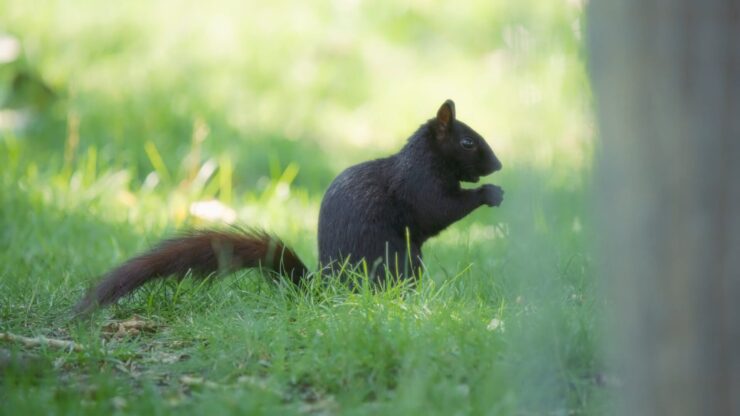Black squirrels, a striking melanistic variant of the Eastern gray squirrel (Sciurus carolinensis), are notable for their unique black fur. This article provides a comprehensive examination of their population distribution, habitat preferences, genetic studies, and the effects of urbanization, integrating valuable data from recent research.
Population Distribution
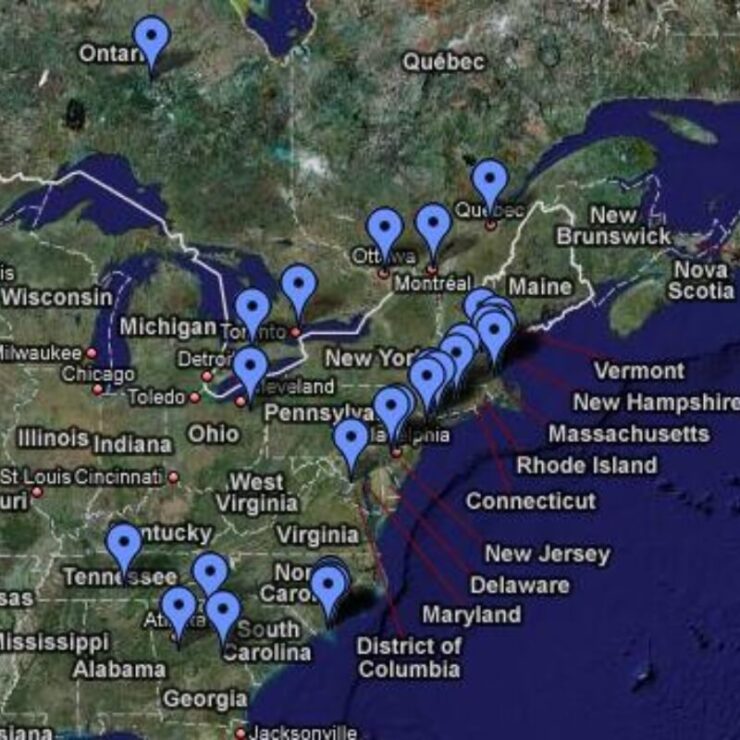
In North America, black squirrels are found in various regions, with significant populations in Pennsylvania and British Columbia. Cameron County, Pennsylvania, is a notable hotspot where black squirrels thrive in beech-birch-maple forests.
Historical accounts reveal that black squirrels were once widespread in states such as New York, Vermont, and Ohio. However, their populations have since become more localized (Creed & Sharp, 1958).
In British Columbia, a population of gray squirrels predominantly black in color has been established. Introduced to an isolated forest and park area, these squirrels have adapted well to their environment. The population is stable, with a high ratio of black to gray individuals (6.5 to 1), demonstrating the successful adaptation of black squirrels in this region (Robinson & Cowan, 1954).
Habitat Preferences
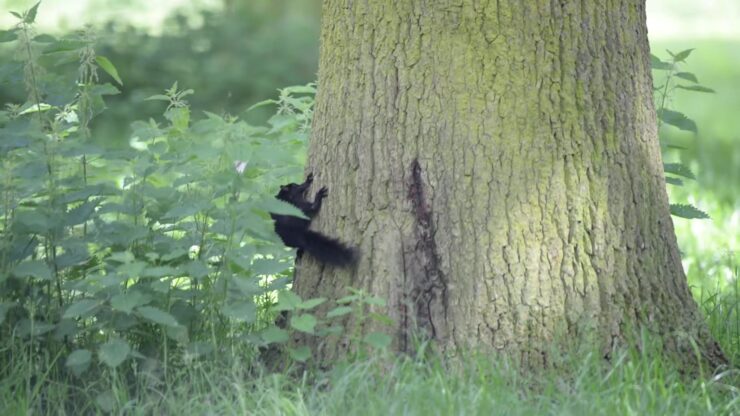
Black squirrels prefer habitats that offer ample food and shelter. Studies in Olney, Illinois, show that squirrel populations, including black squirrels, vary based on tree density and ecological factors.
Annual surveys reveal that areas with a higher density of trees support larger squirrel populations. These habitats provide the necessary resources for their survival (Stencel & Ghent, 1987).
Genetic Studies
Genetic studies on squirrels in the Black Hills illustrate the impact of habitat isolation on genetic structure. Black squirrel populations face challenges in maintaining genetic diversity due to habitat fragmentation.
Studies show that isolated populations exhibit lower genetic variability, which can affect long-term survival. Maintaining connected habitats is crucial for preserving genetic diversity and ensuring the survival of black squirrel populations (Kiesow et al., 2012).
Urbanization Effects
Urbanization poses significant challenges to squirrel populations. In Southern California, urbanization has led to habitat loss and fragmentation for western gray squirrels. These urban populations are often small and isolated, making them more vulnerable to extinction.
The same issues apply to black squirrels in urban areas. Conservation efforts are essential to sustain these populations, highlighting the need for green corridors and habitat preservation in urban planning (DeMarco et al., 2020).
Conservation Efforts
Effective conservation strategies for black squirrels involve preserving and restoring their habitats. Ensuring the availability of suitable habitats and food sources is vital.
Conservation measures include maintaining forested areas, reducing habitat fragmentation, and implementing urban wildlife management strategies. These efforts help sustain black squirrel populations and support their ecological role.
Ecological Significance
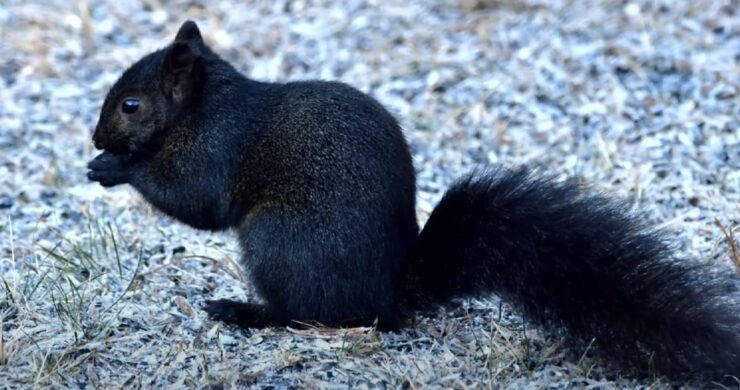
Black squirrels play an important role in their ecosystems as seed dispersers, contributing to forest regeneration and biodiversity. Their presence indicates a healthy ecosystem.
Understanding their population dynamics, habitat preferences, and genetic diversity provides valuable insights into their ecological impact. These insights help develop effective conservation strategies to protect black squirrels and their habitats.
Population Monitoring
Long-term monitoring of black squirrel populations is essential for effective management and conservation. Researchers use various methods to track population changes, including annual surveys and genetic analyses. Monitoring helps identify trends and potential threats to squirrel populations.
In Olney, Illinois, volunteer squirrel counters conduct annual surveys to estimate population sizes and track changes over time (Stencel & Ghent, 1987).
Genetic Diversity and Adaptation
Maintaining genetic diversity is crucial for the adaptability and long-term survival of black squirrel populations. Studies in the Black Hills show that habitat fragmentation and isolation can reduce genetic diversity.
Conservation efforts should focus on preserving connected habitats to ensure gene flow between populations. Genetic studies provide insights into the adaptability of black squirrels and inform conservation strategies (Kiesow et al., 2012).
Challenges and Threats
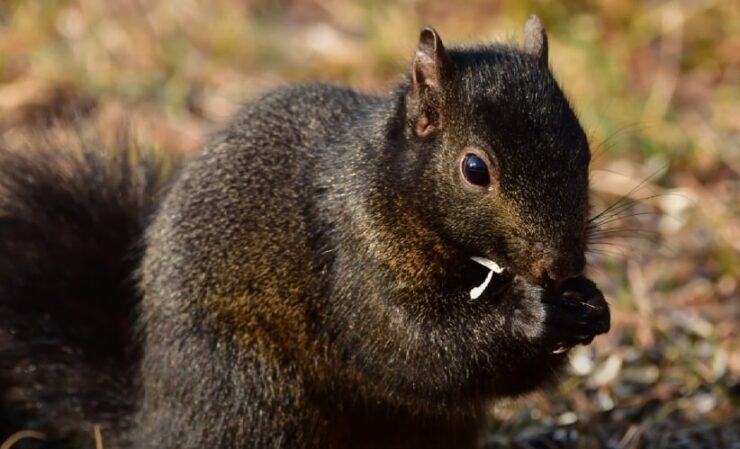
Black squirrels face various challenges, including habitat loss, urbanization, and climate change. Urbanization leads to habitat fragmentation, reducing the availability of suitable habitats. Climate change impacts food availability and habitat conditions.
Conservation efforts must address these challenges to ensure the survival of black squirrel populations. Strategies include habitat restoration, urban planning that considers wildlife needs, and climate change mitigation.
Conclusion
Black squirrels, with their unique genetic makeup and striking appearance, are an important part of North America’s wildlife. Their adaptability to various habitats and resilience in the face of challenges highlight their significance in ecosystems.
Ongoing research and conservation efforts are crucial to ensuring their continued survival and ecological role. Understanding their population dynamics, habitat preferences, and genetic diversity helps develop effective conservation strategies to protect these remarkable creatures.

